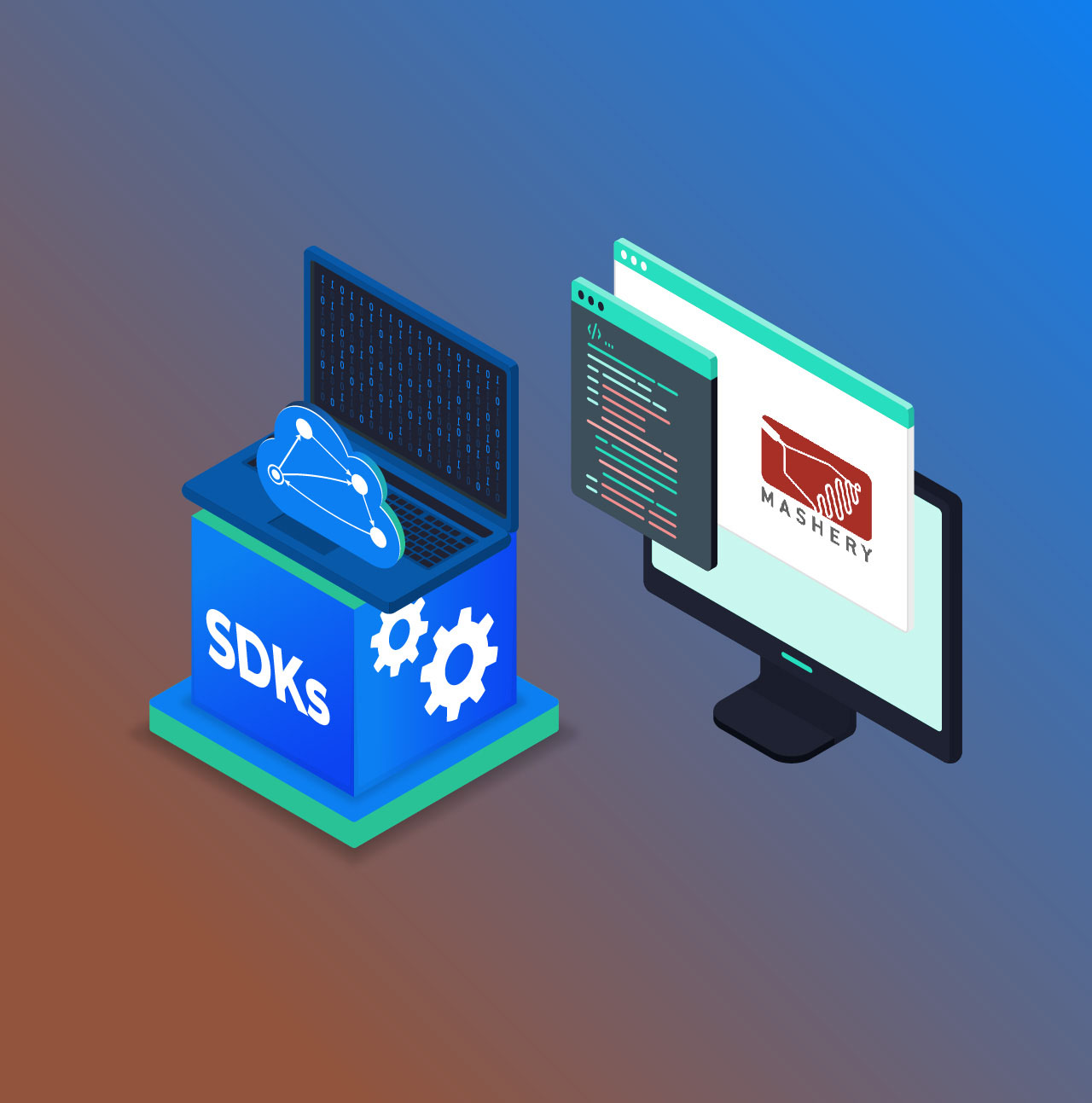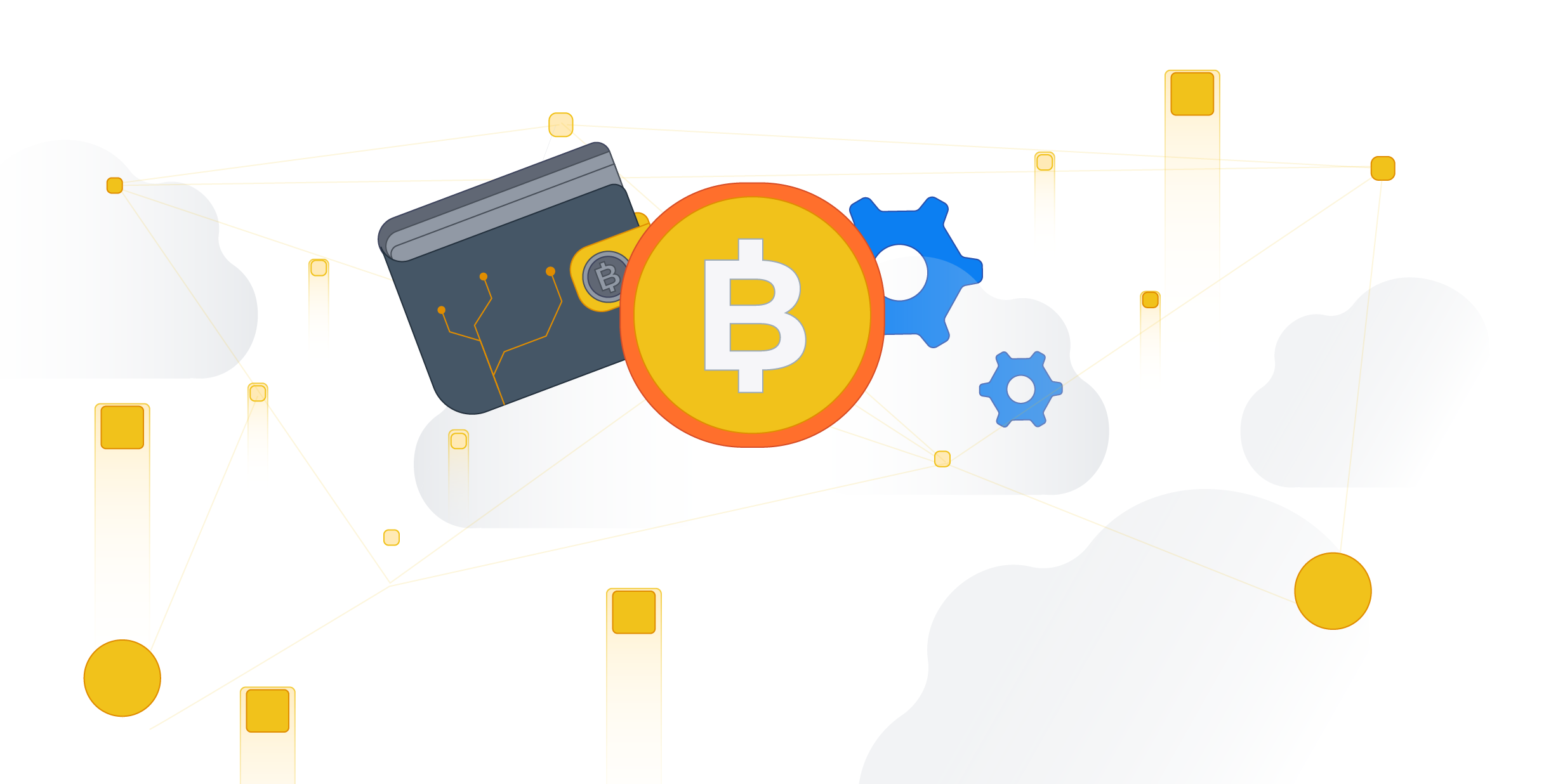
Bitcoin was first introduced to the world in 2009 at a price of approximately $0 per Bitcoin. In early April 2021, it reached an all-time high of $64,800.
The success of bitcoin has given rise to an entire Crypto ecosystem that comprises thousands of Cryptocurrencies and other digital-native assets.
Much has been written about APIs in the Fintech ecosystem, but Cryptocurrencies have largely been absent from the conversation. This is in part because Crypto is not formally classified as Fintech, despite it being “Financial Technology”.
Fintech or not, Crypto deserves a mention in any discussion around technology in the financial sector owing to the amount of interest it is garnering from institutional investors, publicly listed companies, and even government institutions.
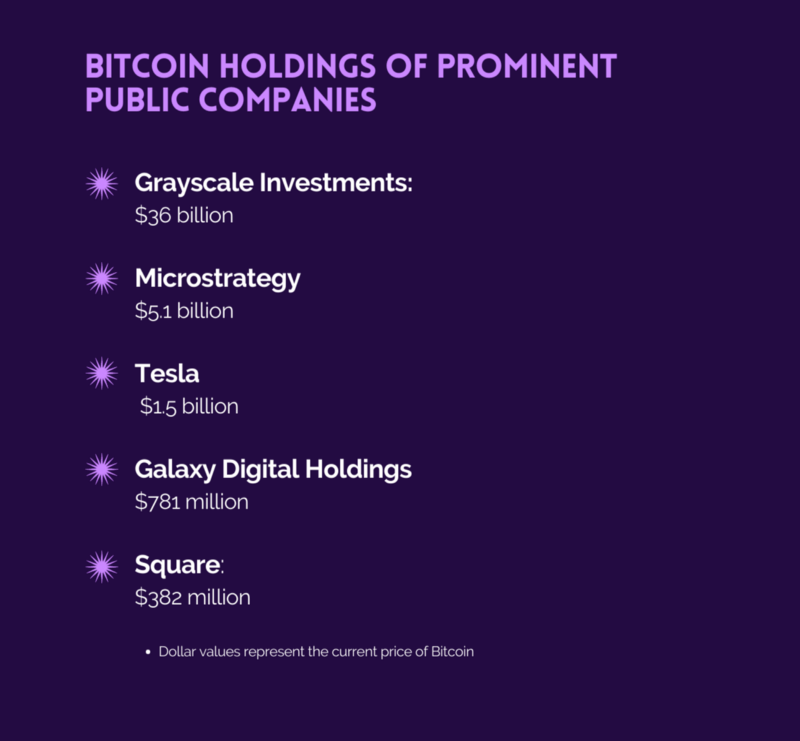
Cryptocurrency Adoption
While institutional investors are adopting Cryptocurrencies as investment instruments, payment providers are laying the groundwork to begin using Cryptocurrencies for financial transactions.
Anchorage Digital Bank has become the first federally chartered digital asset bank in history. This is a major milestone for the Crypto industry, as it places Anchorage on the same regulatory footing as other national banks in the USA.
Mobile payment services are rushing to tap the growing Crypto market as well. CashApp, Square’s peer-to-peer payments app has been allowing its users to buy and sell Bitcoin for the last couple of years. Now Paypal has also jumped into the fray. Not only can Paypal users buy Bitcoin and other popular Cryptocurrencies within the app, but with the newly launched “Checkout with Crypto” feature, customers can also use their Cryptocurrency holdings as a funding source to pay at PayPal’s 29 million merchants around the globe.
Electronic Payments giants Visa and MasterCard also seem eager to join the party.
Visa has already partnered up with major Cryptocurrency exchanges like Binance, Crypto.com, and Coinbase to launch debit cards to allow users to pay with Cryptocurrency at over 70 million merchants globally.
Visa is also launching Crypto APIs to allow users to participate in the digital economy. Although these APIs are still in the initial pilot phase, interested users can sign up to join the waitlist to access the APIs.
Mastercard has revealed that it is planning to start offering support for some Cryptocurrencies later this year. However, details regarding the exact Cryptocurrencies that will be supported have not yet been disclosed.
Crypto Exchanges
As traditional financial institutions gear up to enter the Crypto space, Cryptocurrency exchanges remain the largest stakeholders in this space. Crypto exchange data collected by The Block Research shows that monthly traded volumes on exchanges surpassed $1 trillion in February, a new record.
Cryptocurrency exchanges remain the first point of contact for most new entrants into the Crypto market, allowing users to buy, sell, hold and stake Cryptocurrencies.
Contrary to traditional financial institutions that have had to undergo extensive Digital Transformation initiatives to cater to the digital economy, Crypto exchanges have the advantage of being digital-native. This is why almost all major exchanges already provide public APIs to allow programmatic access to their services.
Crypto Exchange APIs — Features
Most Crypto exchanges provide 2 types of APIs; REST APIs and Websocket APIs. REST APIs provide transactional services that make up the core of the exchange’s offerings. Websocket APIs, on the other hand, are generally used to provide real-time updates.
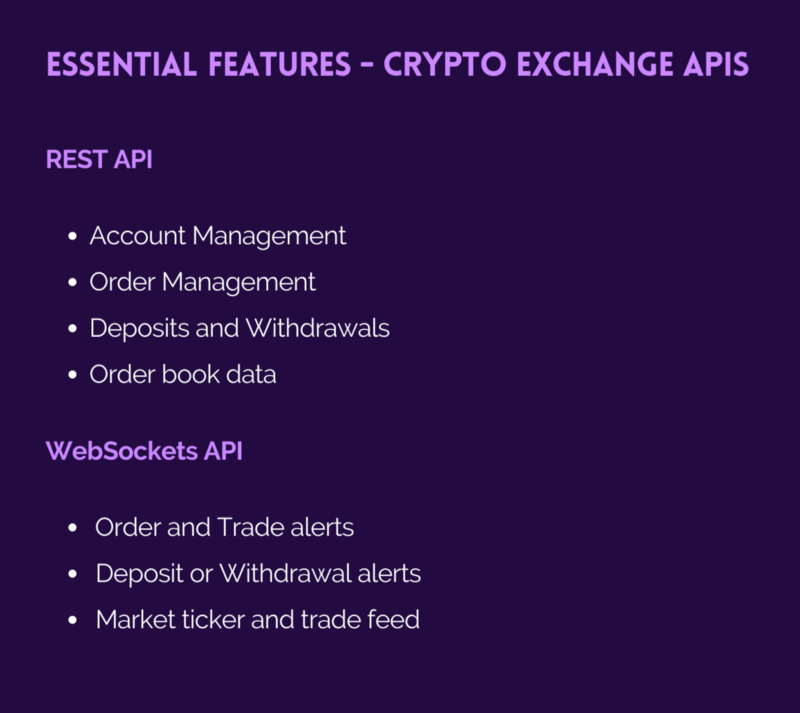
Virtually all of a Cryptocurrency exchange’s service offerings are accessible through its API. Since this holds true for all notable exchanges, therefore, merely having an API can not be a differentiator in an industry where every major player has one. What can set an API apart is API Developer Experience.
Crypto Exchange APIs — Developer Experience (DX)
Developer Experience will play a major role in ascertaining which API gains mass adoption in a fiercely competitive industry that is rapidly going mainstream. The most prominent element in an APIs DX is its Developer Portal.
How do the Developer Portals of some major Cryptocurrency exchanges measure up against our Developer Experience Checklist? Let’s find out!
Developer Experience Checklist
We look for the following elements when evaluating a Developer Portal:
- Landing Page: What is this API and what can it do?
- Getting started guides/tutorials: Step-by-step guides for some of the most common use cases.
- API Documentation: Endpoints, Schemas, Authentication methods, and any other conceptual information that could be useful while working with this API.
- Try it out/ Interactive API explorer: Make API calls from within the Developer Portal.
- SDKs: Client Libraries to cater to a number of Languages and Platforms.
- Code samples: Code samples for each endpoint, preferably in multiple languages.
- FAQs
- Change Logs
Developer Experience Analysis
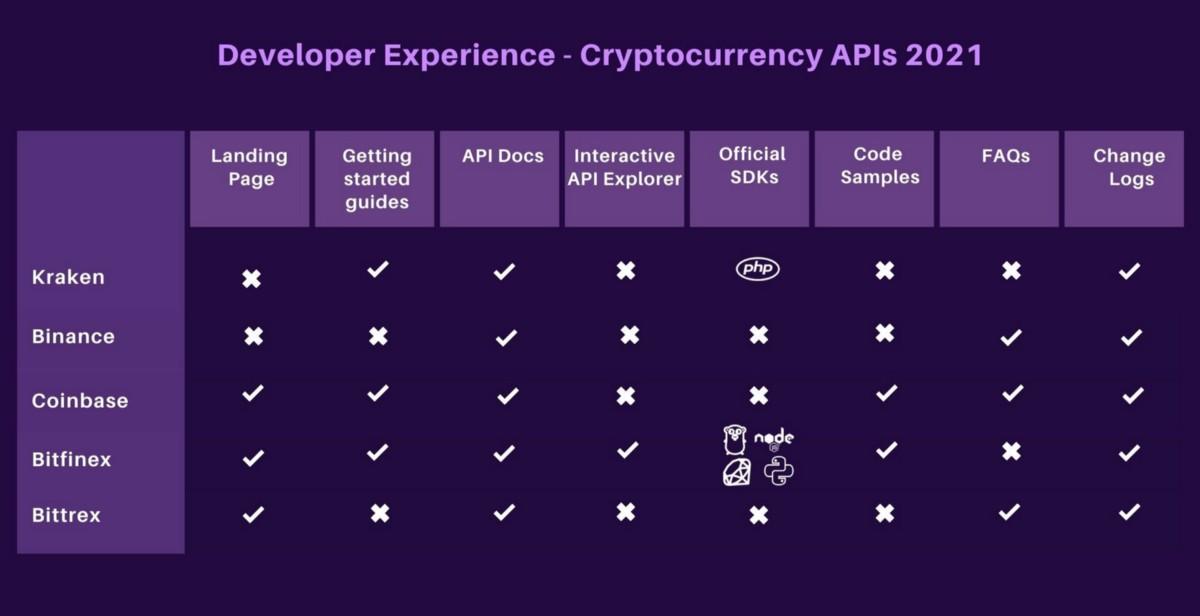
Bitfinex
Bitfinex seems to be ahead of the pack in terms of Developer Experience. The API documentation seems to be well written and well organized and ticks most of the boxes on our Developer Experience Checklist. Open source SDKs are provided for Go, Node.js, Ruby, and Python and are being actively maintained. There are also a number of community-built SDKs for other languages and platforms. The documentation is interactive, allowing developers to make API calls from within the API Docs.
However, code samples are where we found the Bitfinex portal slightly lacking, with many endpoints restricted to code samples in only javascript; it would be great to see code samples in multiple languages to facilitate developers from diverse backgrounds.
Coinbase
The Coinbase Developer Portal seems to tick many of the boxes on our Developer Experience Checklist, however, on closer inspection, we noticed some issues, particularly around SDKs.
SDKs for Python, Ruby, PHP, and Node.js are listed in the documentation, however, a quick look at their GitHub repositories will tell you that they have all been deprecated. There are a number of community-built SDKs featured on the Coinbase Developer Portal as well, however, sadly, most of these seem to have been abandoned by the maintainers.
Code samples are provided for Node.js, Ruby, and Python which is definitely where Coinbase has an edge over Bitfinex, however, the Coinbase portal concedes some ground by not having interactive documentation.
Coinbase is also going the extra mile by maintaining a presence on Stackoverflow as well as a dedicated Twitter account for developers. This certainly earns them brownie points.
We did note, however, that the Coinbase Pro API documentation seems to have a couple of important DX elements missing, including code samples and SDKs, which is especially surprising since this platform caters to high-value clients.
Bittrex
Bittrex has a well-designed portal that seems to be doing the basics right. The documentation is well structured and well written. Moreover, developers can communicate with the Bittrex team by creating issues on GitHub.
Adding interactive documentation, code samples and SDKs would definitely elevate the Developer Experience for the Bittrex API to another level.
Kraken
Kraken has two separate portals for their REST and Websockets APIs with completely different designs and aesthetics which had us double-checking the URL to ensure we were on the correct website. Moving past the visual elements, the Websockets documentation seems to be quite well structured, with the REST API documentation lagging slightly behind.
An official PHP SDK is provided for the REST API but it does not seem to have been updated in a while. There are a number of unofficial SDKs featured on the website, however, they are accompanied by a disclaimer that the company is not liable for any losses incurred due to the usage of these libraries, so we are not sure of the usefulness of these community maintained SDKs.
Binance
The last exchange on our list also happens to be the largest of the lot, Binance. The Binance API docs do the basics quite well and additionally, provide a Postman collection to lower the barrier for entry. There is also a developer forum where developers can discuss issues with the Binance support team.
However, as with the other exchanges on our list, Binance also seems to be complacent in terms of SDKs and code samples. These would be great additions to the Binance Developer Portal.
To sum up, it seems that most Crypto exchange Developer Portals are lagging in terms of SDKs and code samples, which we rank among the most important elements of a great Developer Experience.
Most exchanges seem to be relying on community-built libraries. While we love open-source software at APIMatic, we also acknowledge the fact that community projects tend to be neglected over time. API owners must also either audit these libraries periodically to ensure their stability or provide disclaimers for developers to use these libraries at their own risk, neither of which is ideal.
APIMatic solves this problem with its proprietary code generation engine, which is able to instantly auto-generate SDKs and code samples for any API.
To learn more about how we can help automate your APIs developer experience, check out our Developer Experience Portal offering, complete with API documentation, auto-generated SDKs, and code samples.




